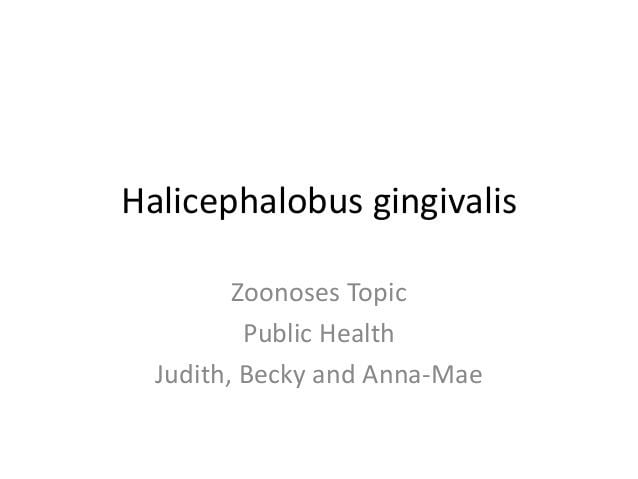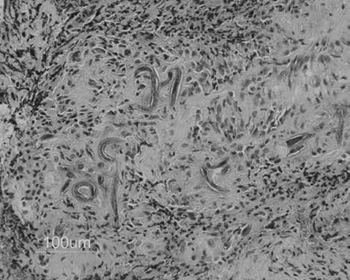Family Panagrolaimidae Phylum Nematoda | Genus Halicephalobus Rank Species | |
Similar Rhabditida, Gnathostoma hispidum, Trichobilharzia regenti, Gongylonema, Paragonimus kellicotti | ||
Halicephalobus gingivalis
Halicephalobus gingivalis is a free-living nematode species that was identified and named in 1954 by Stefanski. It is a facultative parasite of horses and humans. Based on studies performed on infected horses in Florida, it can be inferred that the parasite is associated to swampland environments. They are dioecious as both female and male organs have been found separately. Eggs and immature larvae have been found in tissue sections, indicating an asexual reproductive cycle. Free-living males have been found in soil environments, indicating that sexual reproduction also occurs. The site of entry for the parasite is hypothesized to be through breaks in skin or through mucous membranes. They are distributed worldwide as cases of equine infections have been found in Canada, Florida, the Nordic regions, and Arabian horses alike.
Contents
- Halicephalobus gingivalis
- Morphology
- Life cycle and habitation
- Prevalence
- Effects on health
- Treatment
- Further research
- References

Morphology

The genital tract in the advanced fourth stage of H. gingivalis is didelphic and amphidelphic and terminal ends of the horns are reflected, the anterior one ventrally, the posterior one dorsally. Adults (panagrolaimids) are 235–460 μm long. In the parthenogenic adult, the posterior branch forms a short ovary, whereas most of the anterior branch becomes a combined uterus–oviduct. A conical, asymmetrical tail that is shorter on the ventral side.
Life cycle and habitation

This is a facultative parasite whose stages remain unclear. It dwells actively in soil, plants, and other organically rich environments including manure and compost; it is sometimes found in horses.
Prevalence

According to a 1997 paper, neurohelminthiases in general are more prevalent where environmental factors and poor sanitation assist transport of parasitism between man and animals, and have been facilitated by population shifts and improved transport. Neurohelminthiases are often not diagnosed because they are unfamiliar, and diagnostic tests are not easily available. Neurohelminthiases in general are not common in the United States. A 2014 inquest heard that only five cases of human infection caused by H. gingivalis, all fatal, had been recorded worldwide.
Effects on health
H. gingivalis is uncommon in humans so far. However, its rare effects are lethal as there is inflammation of the central nervous system, leading to brain dysfunction and meningoencephalomyelitis. This disease causes increased concentration of eosinophils in the cerebrospinal fluid. In horses (where the parasite is most studied), infection of the brain is common, followed by the kidneys, oral and nasal cavities, lymph nodes, lungs, spinal cord, and adrenal gland, and also reports of infection of heart, liver, stomach and bone. A rare triple fatality from Halicephalobus was reported in the UK, where infected kidneys were transplanted to two recipients.
Treatment
All known cases of human infections were only found post mortem and had been fatal; they had not been treated with antihelminthic drugs (such as ivermectin and benzimidazole). In animals these drugs are mostly ineffective as they cannot cross the blood–brain barrier.
Further research
When there is occurrence of a neurohelminthic disease, it is fatal since there are no tests that can be done to identify these species and apply effective treatment. These nematodes seem to exhibit neurotropism, but their life cycle, mode of infection and risk factors are not yet clearly understood.
